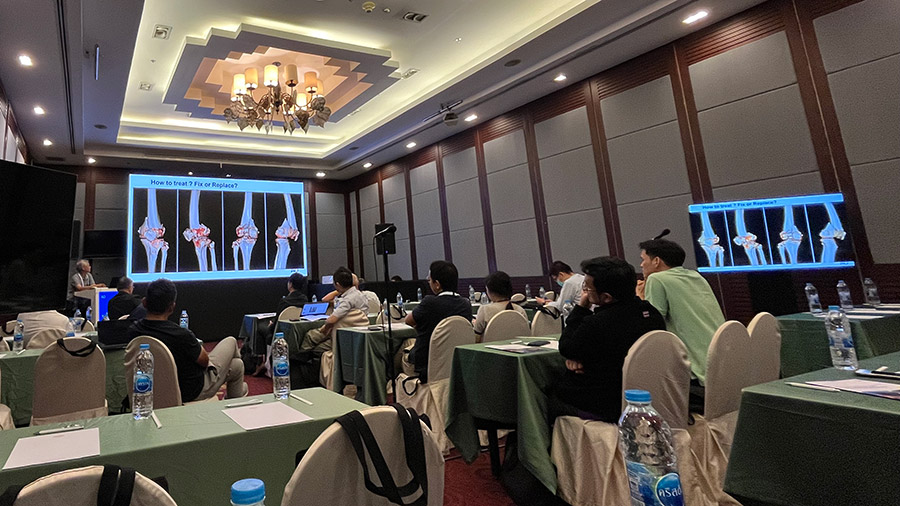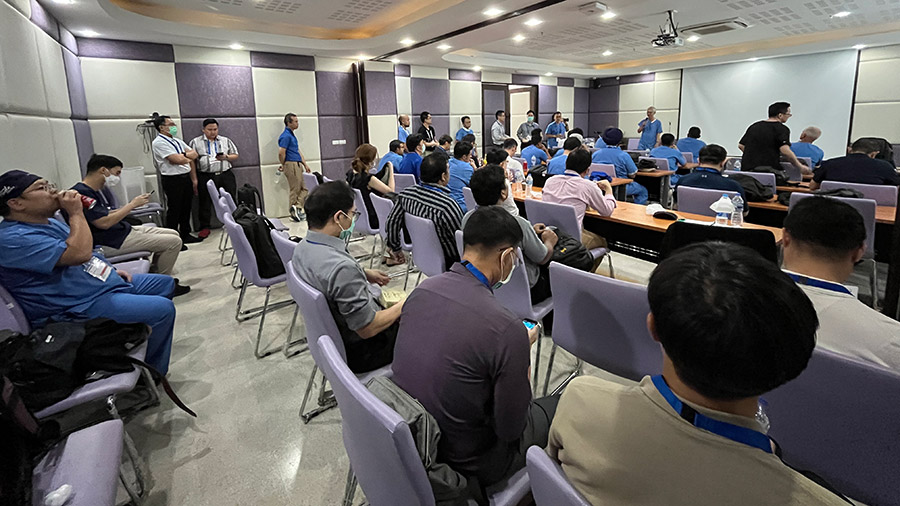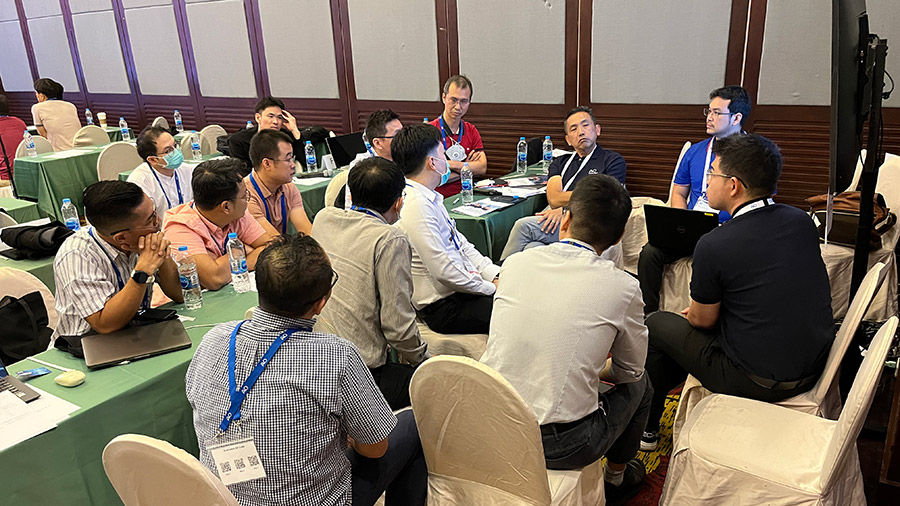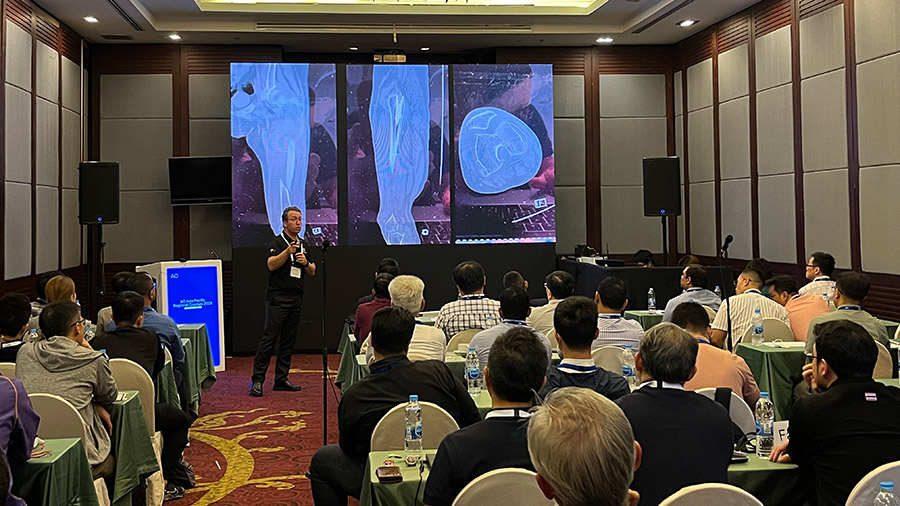Shining a light on the AO Trauma Lower Extremity Curriculum
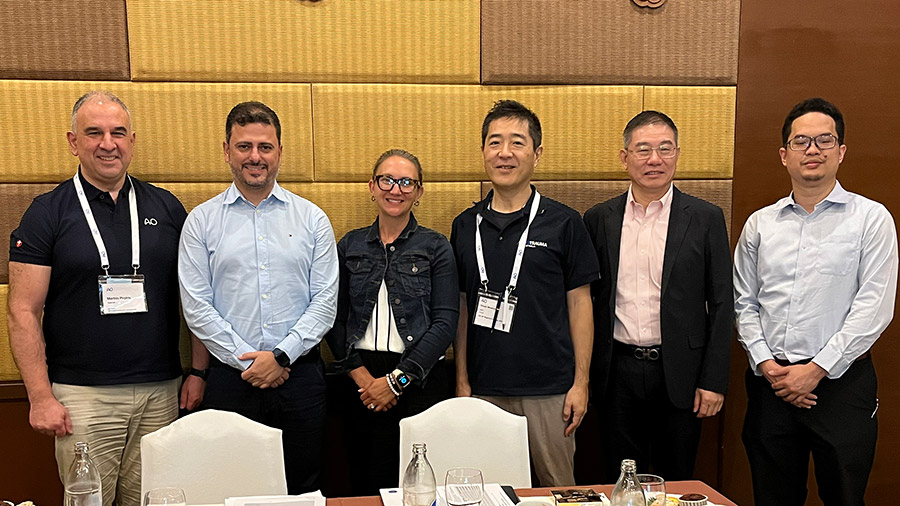
Following the rollout of the AO Trauma Lower Extremity Curriculum in 2022, the AO Trauma Masters Course—Lower Extremity Trauma was launched at the 2022 regional courses in Dubai, United Arab Emirates) and the 2023 regional courses Chiang Mai, Thailand. The curriculum will make its AO Davos Courses debut in the AO Trauma Masters Course—Current Concepts—Lower Extremity I (Femur to Patella) and the Masters Course—Current Concepts—Lower Extremity II (Patella to Pilon). Feedback from chairpersons, faculty, and participants alike indicate the format’s great success, with post-event evaluations reporting 100 percent would recommend this event to a colleague; 100 percent of those who completed the post-event evaluation reported the overall high impact of this educational event.
Prior to the regional course in Chiang Mai, lower extremity courses with the competency-based curriculum stamp took place in Amman, Jordan, and Bangalore, India. Both courses were a first in their respective regions, where AO Trauma had been attempting to launch the new curriculum since the rise of the COVID-19 pandemic.
Characteristics of the courses
These comprehensive, three-day, lower extremity masters courses with anatomical specimens are built from modules, making it possible to adjust the courses to local needs. Most of the content is delivered through small group discussions, where structured cases integrate the learning objectives from the curriculum. Lectures are only used to introduce the challenges related to each anatomical region and to summarize the evidence for current management, making the courses highly interactive with most time spent in small group discussions and anatomical specimen labs.
Voices from the events and the task force
The current AO Trauma Lower Extremity Education Task Force—consisting of Lisa Blackrick (United States), Robinson Esteves Santos Pires (Brazil), and Hiroaki Minehara (Japan)—met in conjunction with the regional course in Chiang Mai, Thailand, and saw the curriculum in action.
Blackrick detailed the format of the new curriculum’s benefits for both learners and faculty.
"The new AO Trauma Lower Extremity Curriculum provides evidence-based instruction via a variety of assets including lectures, case-based discussions, and cadaveric/dry bone model practical labs,” she explained. “Each module has clear learning objectives focused on the target audience and the content is standardized and reproducible across many regions. In addition, there are numerous resources located conveniently in the online faculty support package to tailor the course to your geographic areas of interest. This is a great curriculum that can be adapted to fit any chairperson's vision for the course."
“The new AO Trauma Lower Extremity Curriculum presents an extremely interactive or engaging format: presentation of a problem and possible gaps in the literature; spotlight on small group case discussions; and closing lectures focusing on current evidence,” added Pires, who is an international program editor (IPE). “Additionally, ‘tips from the masters’ provide tips and tricks to help course participants avoid complications and optimize patient outcomes.”
He said the online Faculty Support Area provides the whole curriculum, with cases for discussion and the short lectures featuring only two topics—“analyzing the problem” and “current management (evidence-based)—for each module.
Task force member Minehara pointed out the value that the anatomical specimen labs bring to the lower extremity courses.
“I would say about the anatomical specimen labs provide crucial insights about the most essential approaches and particularly focused on the anterior/posterior approaches,” he said. “It’s in these labs that course participants are able to learn about approaches that can meet all needs.”
In addition to the three-day lower extremity courses, the task force is gearing up to launch three new, two-day program templates for femur only, knee only, and tibia/fibula only courses. Once approved by the AO Trauma Education Commission, the expanded offering of the lower extremity curriculum and faculty support material will be available for all regions to deliver these new focused two-day courses.
“It’s great to have met the AO Trauma Lower Extremity Education Task Force in Chiang Mai to discuss the current needs and trends of lower extremity trauma education,” said Cong-Feng Luo (China), who chaired the course in Chiang Mai. “I think the subspeciality in lower extremity trauma is the trend not only for our region, but for the future. So, I think more subspecific courses—such as, pelvic trauma, knee trauma courses—will be attractive to our trauma surgeons nowadays worldwide.”
Chiang Mai course participants praised the faculty’s experience and eagerness to teach, pointing out that the interaction between lecturers and learners in developing cases was especially interesting.
Courses in 2024
Chairpersons of lower extremity courses in 2024 are strongly encouraged to utilize the available material for course planning and delivery. The AO Trauma Lower Extremity Education Task Force and regional program contributors are happy to provide support in setting up the program and be available as faculty.
To see a list of past and current task force members as well as regional program contributors, please visit AO Trauma Faculty Center.
Questions and feedback are highly valued and can be shared with the AO Trauma Lower Extremity Education Task Force via e-mail to Kokeb Andenmatten.

